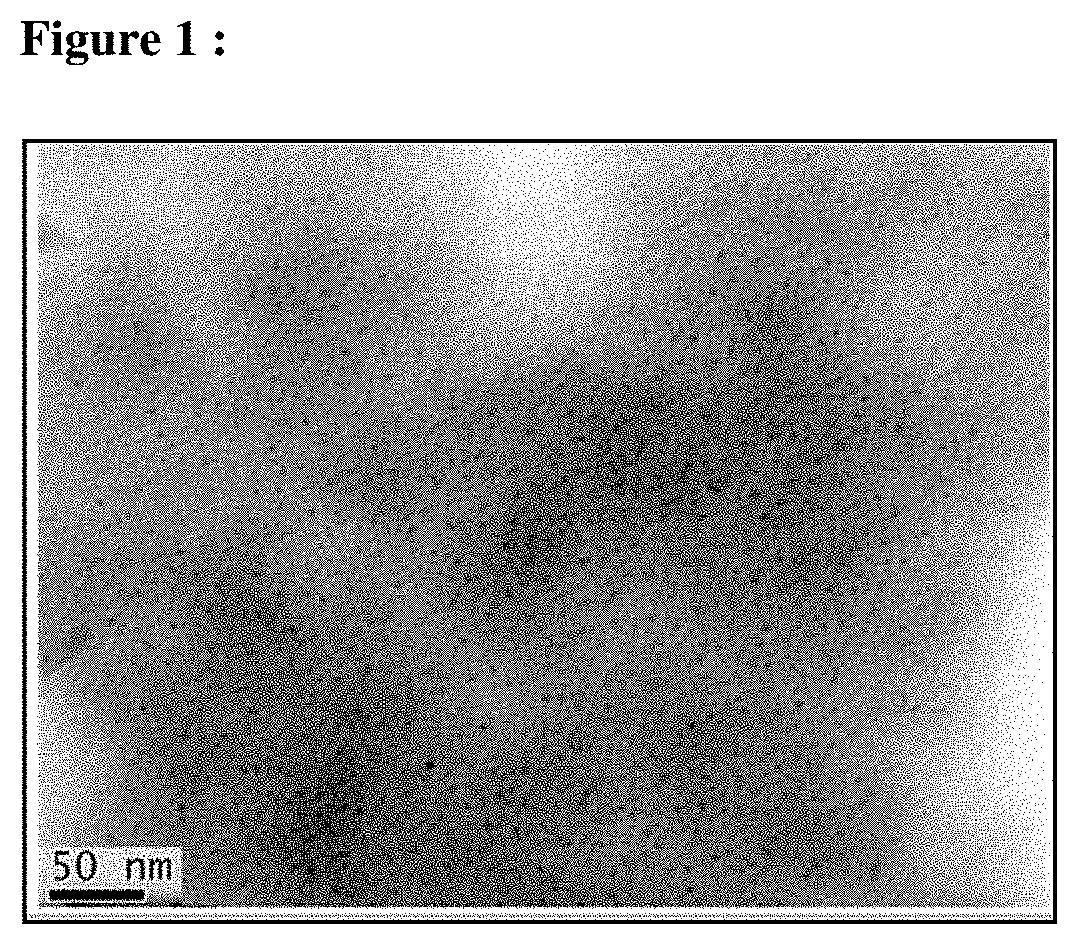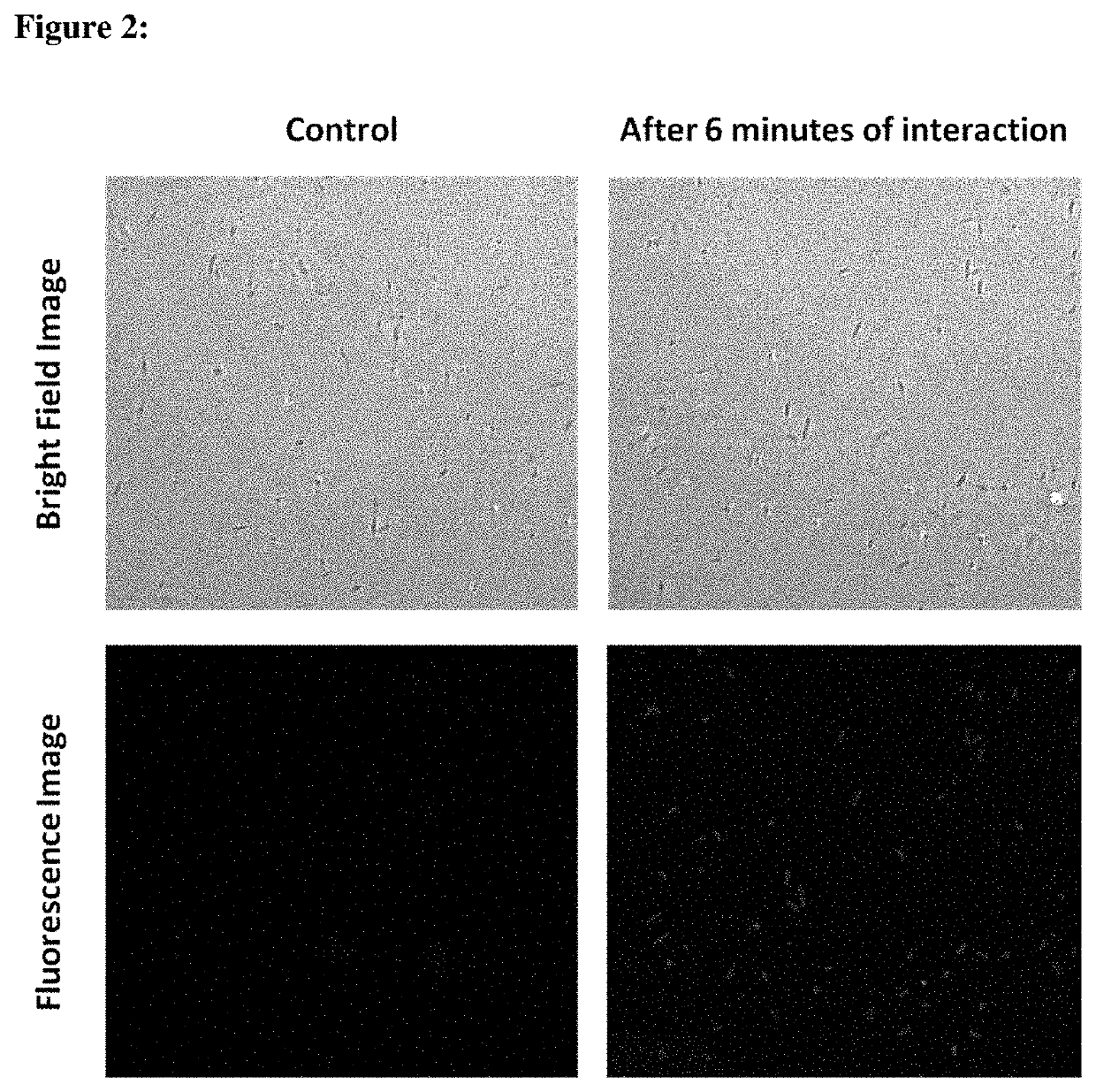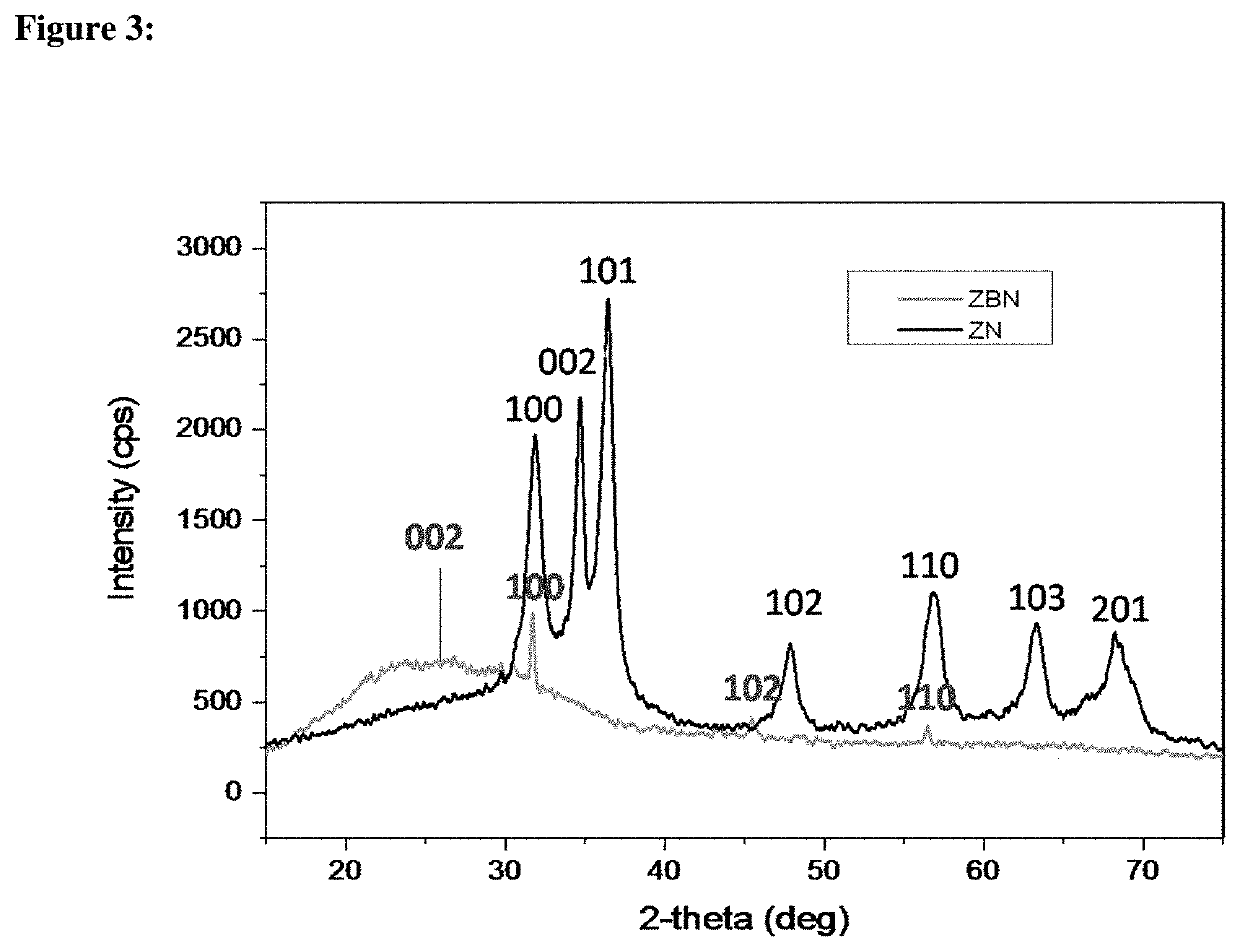Bionanocomposite and method thereof
a bionanocomposite and bionanotechnology, applied in the field of fluorescent bionanocomposite, can solve the problems of quenching signal, cumbersome staining technique of gram, and limited photo stability of most stains available in the mark
- Summary
- Abstract
- Description
- Claims
- Application Information
AI Technical Summary
Benefits of technology
Problems solved by technology
Method used
Image
Examples
example 1
[0080]The experiment was performed to compare the fluorescent stain with the commercially available stains. It was found that most of the conventional stains suffer / s from some critical limitations. The overview of the drawbacks for individual fluorescent stains is enlisted in the table 1 below:
TABLE 1Comparison of ZBN with other fluorescent bacterial stainsTarget bacteriaDrawback(s)FluorescentType ofTarget vitalityGramGramStainingLightprobeprobeLiveDeadpositivenegativetimeToxicitysensitivityRefDAPISynthetic15-30Potential 1-2 minmutagenSYTO 9Synthetic1-30Potential 3-4 minmutagenPISynthetic5 minPotential 5-6 mutagenRhodamineSynthetic30 minToxic 7-8 123DMAOsynthetic15-30Not 9-10minknownAcridineSynthetic2 minToxic11-13OrangeHoechstSynthetic10-30Potential14minmutagenBrazileinNatural✓15 min✓15ZBNNatural✓✓✓>10Presentmininvention
[0081]ZBN stain is synthesized from agriculture waste which is a greener method and hence has shown to be non-toxic. Most importantly, the ZBN stain in the present...
example 2
Synthesis of Zinc Bionanocomposite (ZBN)
[0083]Optimal reaction conditions for the formation of ZBN were determined by conducting UV-Visible and TEM studies. ZBN synthesis was done under variable range of reaction conditions i.e. different ratios of zinc salts and extracts from agriculture waste at different temperature for variable time. ZBN was optimised when 5 ml of 2 mmol / L solution of Zinc salt (examples of zinc salt that may be applied and are not limited to zinc nitrate / zinc chloride / zinc acetate / zinc sulphate / zinc carbonate / zinc citrate / zinc acetylacetonate / zinc chlorate / zinc gluconate / zinc oleate / zinc phosphate) was used with extract of plant from the family (Rosaceae / Sapindaceae / Poaceae)) based agricultural waste (can consists of straws and / or stems and / or peels and / or dried leaves). The mixture obtained was stirred on magnetic stirrers and heated at variable temperature (room temperature, 50° C., 60° C. and 80° C. and 100° C.) for 1 h. The mixture was made alkaline with 2-...
example 3
Synthesis of Zinc Oxide Nanoparticles (ZN) (Negative Control)
[0086]ZN was synthesised by the co-precipitation method (16) wherein ZN was synthesised when 5 ml of 2 mmol / L solution of zinc salt that may be applied and are not limited to (zinc nitrate / zinc chloride / zinc acetate / zinc sulphate / zinc carbonate / zinc citrate / zinc acetylacetonate / zinc chlorate / zinc gluconate / zinc oleate / zinc phosphate) was constantly stirred with NaOH aqueous solution that was added drop wise. The white precipitate i.e ZN appeared and was washed with deionised water. The ZN was filtered and dried thoroughly. ZN was characterised via sophisticated techniques.
PUM
| Property | Measurement | Unit |
|---|---|---|
| size | aaaaa | aaaaa |
| temperature | aaaaa | aaaaa |
| size | aaaaa | aaaaa |
Abstract
Description
Claims
Application Information
 Login to View More
Login to View More - R&D
- Intellectual Property
- Life Sciences
- Materials
- Tech Scout
- Unparalleled Data Quality
- Higher Quality Content
- 60% Fewer Hallucinations
Browse by: Latest US Patents, China's latest patents, Technical Efficacy Thesaurus, Application Domain, Technology Topic, Popular Technical Reports.
© 2025 PatSnap. All rights reserved.Legal|Privacy policy|Modern Slavery Act Transparency Statement|Sitemap|About US| Contact US: help@patsnap.com



